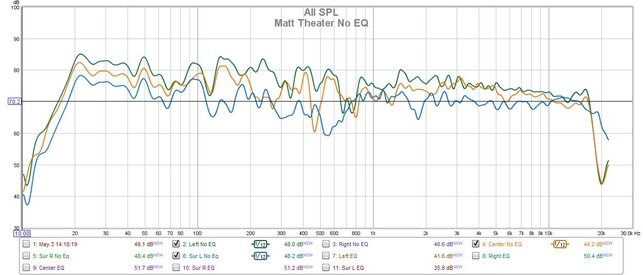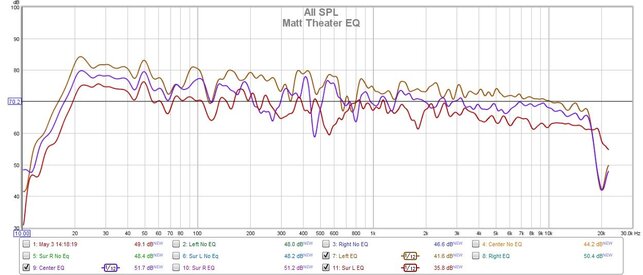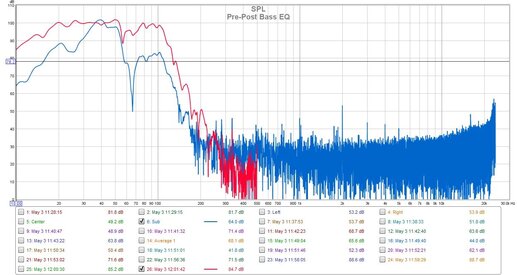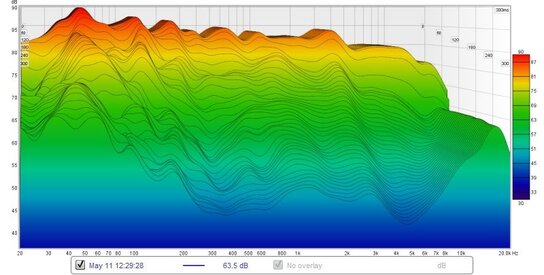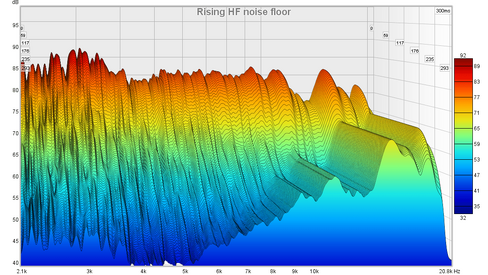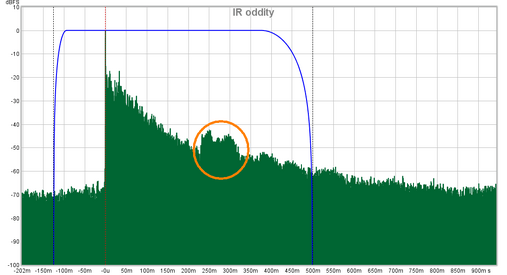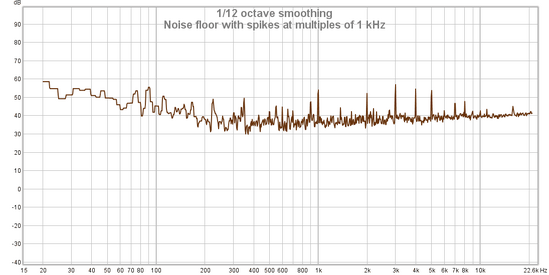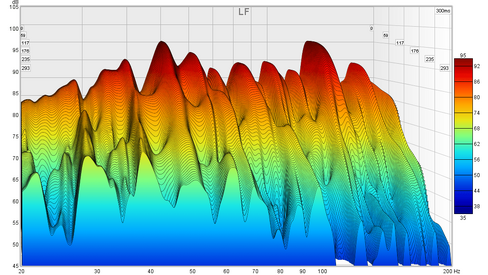Hi guys,
I’ve setup my mids and highs nicely so now its time to move onto bass. Whenever I measure the bass I get lots of peaks and dips no matter where I set the measurement mic. But they’re all different depending where I place the mic. Yea lots of room modes. What the best way to measure the room, mic at the listening spot or take a series of measurements close to my listening chair and average these? (What I’ve been doing).
Really what to make sure I’m using the correct measurement process before I start looking into the results.
Many thanks, Dave
Hi Dave,
I think there is no perfect right answer to this, there are a lot of ways to do this. First keep in mind, at bass frequencies, with no subs or a single sub it will likely be impossible to get a smooth bass response over a range of positions. It would require either a HUGE room or a ton of bass damping.
Measurements should be taken at and around the listening position. It doesn't make sense to take only one measurement, because the mic doesn't hear like our ears. We need a few measurements to get a sense of the modes in the space our head occupies. I suggest taking 3-5 measurements to start, more is ok too. You need to document where you take these carefully, as you will want to retake them after making adjustments, and it needs to be in the same spot. I
n my system, moving just 6 inches can cause a large 6db peak to arise at 80hz. That peak remains over the entire second seating position but is non-existing over most of the primary listening position. It amazing how big the differences can be.
You don't want to EQ a moving target, so the first step is to be sure the subwoofer and speakers are in their optimal place. Once you have baseline measurements, I suggest moving the speakers around a bit. For the main's, I actually think it is best to focus on the optimal position for the mids and highs, the staging, etc. For subs, all that matters is the smoothness of the bass, so moving it around is a good idea. It is better to have it near a wall in general, but not necessarily a corner (but always a good place to try).
As for averaging, I don't rely on the average but I use averages. I always want to be sure that if I average, I don't make a single position worse. What if I average a set of positions, EQ that, and then measure again, but now my primary listening position is, on average, worse? That isn't good. As such, while I may use an average to adjust EQ, I compare the results against my primary listening position measurements. Usually a set of 2 or 3 measurements near my head position. I make sure that if I'm cutting or boosting, I don't do so in an aggressive way that makes it worse. The "correct" way is to actually calculate the EQ based on minimum deviance amongst the many measurements. That requires an extra step external from REW and isn't something most people bother with. After doing this for over a decade, it is my opinion that, while the deviance method is better, especially for professionals, it isn't better enough to be overly audible.
The main benefit of using an average when letting REW calculate the EQ is that it protects you from making too many EQ filters or EQing with a very high Q filter. If it's very high Q (very narrow band) then it isn't audible. In my experience, if a system is setup correctly, with speakers in the optimal placement, it is possible to get a +/- 3dB smoothness to the response with just 1-2 bands of EQ in the bass.








